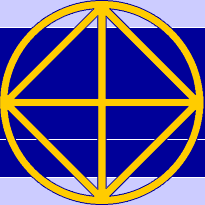Book Presentation
Good Friday - Its Symbolism
by Dr. K. Parvathi Kumar

The cycle of the year contains rituals helping us to open the doors to the subtle
kingdom of Light with its rainbow colours. Friday stands for the subtle light, and in ritual
temples ritualistic work is conducted on Friday evening, so that the light in darkness can be experienced. Good
Friday is an annual event and has also come to be the Friday on which the Grand Master Jesus passed over into
the realms of Light and came back again to establish the Path of Light that he received through such ascension.
The booklet "Good Friday - Its Symbolism." by Dr. K. Parvathi Kumar speaks of this dimension.
A 10 minutes
talk on Good Friday in a Temple on 13 April 2001.
Content: The Subjective Light; The
Path of Self Surrender; The Mother of Grace; The Yearly Drama of The Ritual of Pass-Over; The Third Decanate in
Aries
Dhanishta Foundation, India, 2001
- Book order information
- About the Author
- Online Books K. Parvathi Kumar
- We have a few English copies to distribute for free.
Sample:
Abraham, Moses, Isaiah, Jacob put together form Jesus, the ChristThe Subjective Light
Good Friday is the most important day for the ritualists who practice the inner ritual in the secret and sacred temples. Friday is very important because it is the day that opens the doors to us to the subtle kingdom, which is the kingdom of Light with its rainbow colours.
The pure white ray manifest as the seven rainbow colours. The gross physical is like the brown Star from where we have to ascend into the higher states of light, which are represented by the subtle light. Friday stands for the subtle light and hence all (rituals) temples are conducted on Friday evening, so that through the ritualistic work, in the night during darkness, the light can be experienced.
Darkness is the subjective light, while the daylight is the objective light. Full moon is light objective, while new moon is light subjective. Darkness stands for subjective light and for that reason, Friday is important.
The Path of Self Surrender
Good Friday is the best of the Fridays of the year. Good Friday is an annual event and has also come to be the Friday on which the Grand Master Jesus passed over into the realms of Light and came back again to establish the Path with the Light that he received through such ascension. On that Good Friday there is the ascension and the resurrection. The grand Master walked the Path of pain on that Friday at 7 p.m. I.S.T. (3.30 p.m. in Jerusalem). He walked the Path till about two and half-hours. Later he was crucified on the cross in the twilight hours, an event, which is unparalleled in this era. There is no equal to it.
The Path that he followed is the Path of Grace or Anugraha in Sanskrit. Such Anugraha is possible only if one has surrendered the self, which is so very easily spoken by the Hindus as Atma Samarpana, 'Self Surrender'.
Surrender the things relating to personality is one thing, surrender of the personality is another thing; surrender of the self is "The Thing".
Hence, surrender means sacrifice. In the Veda it is called "the all sacrifice" - Sarva utah. All is sacrificed, including our self, at the feet of the Lord. This is also called Holocaust in Greek and Jewish rituals. The Purusha Suktam of Rig Veda speaks elaborately of the Yajna of Sarva utah, which is seldom demonstrated to that extent as Jesus, the Christ. It is most difficult of the paths to follow, i.e., the Path of Self-Surrender, which is also called the Path of Anugraha, the Path of Grace.
Jesus Christ is the only example, during the last 2000 years of such a sacrifice, and there is no equal to it till date. He volunteered for such crucifixion and it happened to be on this Friday, which was considered as Good Friday even before.
Good Friday existed even before this even. It is the Friday in which the annual ritual of Pass-over is conducted in the secret temples. It is in conformity with the Vedic Astrology. Pass-over is known to the present humanity as relating only to the event of crucifixion and resurrection of Jesus, but it is as old as Veda.

 Circle of Good Will
Circle of Good Will Contact
Contact
